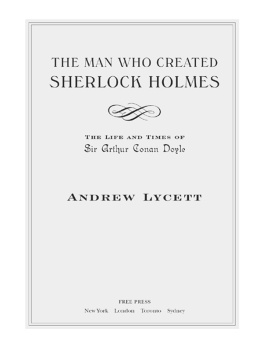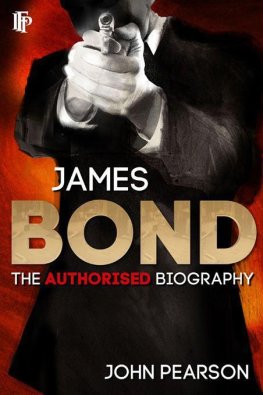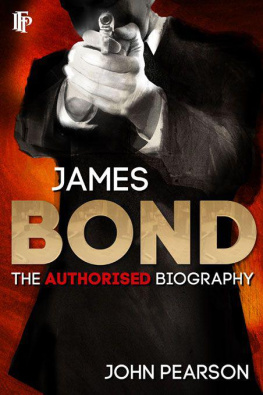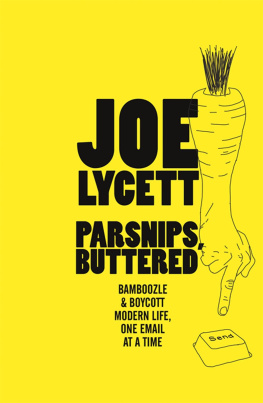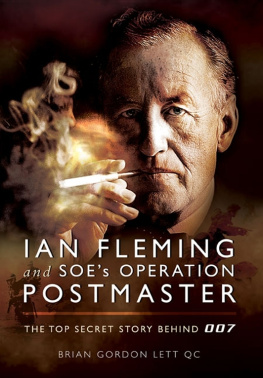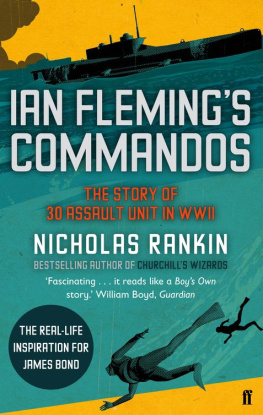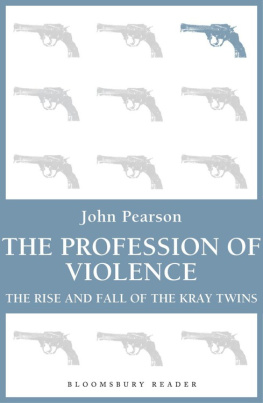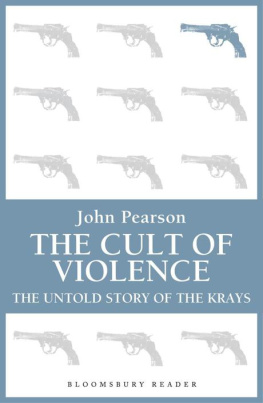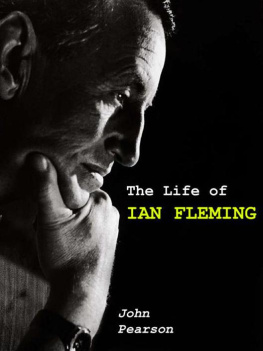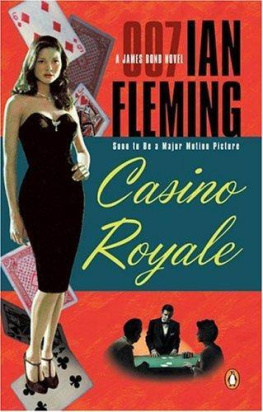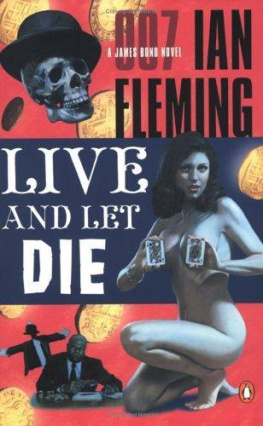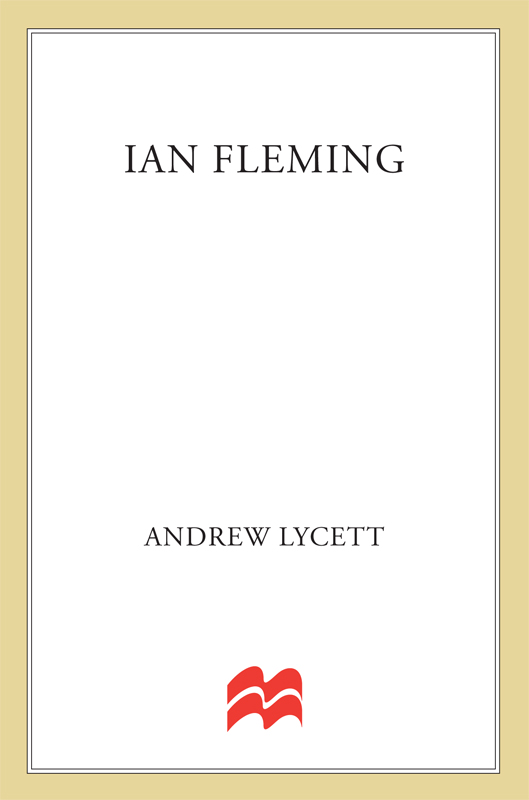
The author and publisher have provided this e-book to you for your personal use only. You may not make this e-book publicly available in any way. Copyright infringement is against the law. If you believe the copy of this e-book you are reading infringes on the authors copyright, please notify the publisher at: us.macmillanusa.com/piracy.
Contents
Foreword
I have been lucky to stumble across a twentieth-century icon whose turbulent and enthralling life was much more interesting than I, or the general public, ever envisaged. When I first encountered Ian Flemings novels in the early to mid 1960s, they were, like Beatles albums, part of a teenagers cultural rites of passage. Following the release of Dr No, the first James Bond film, in 1962, the suave secret agent portrayed on screen by Sean Connery became a worldwide popular hero. For a generation of schoolboys such as myself, Flemings paperbacks, which proliferated in the films wake, offered a potted guide to what we dimly perceived as sophisticated experience. Huddled under scratchy blankets in dormitories after lights-out, our torches flickered and our eyes wearied as we eagerly participated in underwater battles in the Caribbean or death-defying tangles with spies on the Orient Express, while our unfocused libidos were roused by steamy sexual couplings, the likes we could only dream of. The action was more traditionally exciting than Micky Spillane and the bedroom scenes more direct than Harold Robbins. Not for nothing did Fleming, in his frequently self-disparaging manner, call his books the product of an adolescent imagination (another of his descriptions was fairy tales for grown-ups).
Returning to Ian Flemings novels as an adult, I found them surprisingly enduring. They were a clever concoction all right: like a good salad dressing, they required the right ingredients, their author used to say. But what once had been sensational now seemed a natural part of the story, and what stayed in the mind was the ebullience of the writing: the freshness of the images, the thoroughness of the factual research and the scope of the imaginative vision. Fleming was a much more engaging wordsmith than Sapper and the purveyors of clubland heroes from a generation earlier, while few latter-day imitators have been able to match his innate style.
My interest in Fleming as a subject for a biography started from my supposition (only partly true, I later found out) that he was a prototype James Bond, a wartime spy whose various exploits could be charted from papers in the Public Record Office which had recently been released either under the normal thirty-year rule or, if more secret, as a result of the Major administrations open government initiative.
The existing literature did little to dispel this gung-ho impression. In 1966, only two years after Flemings death, John Pearson wrote a lively biography which suffered, through no fault of his own, from being too close to its subject, both in time and in perspective (the book was initiated by the Sunday Times for which both he and Ian had worked). Pearson managed to flesh out Ians wartime career, showing how certain incidents provided material for the later Bond books. But in doing so, he helped establish the myth of Ian as 007 template, while his need to work closely with Ians widow Ann precluded serious examination of his subjects emotional life.
Since then, an interesting memoir by Ians lifelong friend, Ivar Bryce, first published in 1975, made little impression on the world, partly because it was beset by legal problems, and partly because it was unjustly dismissed by reviewers as an essay in self-indulgence. Nevertheless it provided useful insight into the power of Ians personality (as well as his gift for friendship). Otherwise most biographers and memoirists have tended to appropriate Ian as a trophy acquaintance, without adding much to an understanding of his character (an exception would be Peter Quennell), while studies of three members of his immediate family his brother Peter, his sister-in-law Celia Johnson and his half-sister Amaryllis have portrayed him as an amiable eccentric, operating at a tangent from the accepted Fleming norm.
Ians inner self became clearer with the publication in 1985 of Ann Flemings witty and perceptive correspondence (edited by Mark Amory). But while these letters, a boon to would-be biographers, were often painfully explicit about the Flemings marital ups and downs, they did little (apart from detailing Ians moodiness and love of golf) to put such matters in context. There was no reference, for example, to Blanche Blackwell, the Jamaica-based woman who enchanted Ian during the last few years of his life.
It did not take me long, once I had begun to talk to those who had known Ian, to understand that he was a much more intricate and elusive man than had been warranted. Winkling out the details was not always easy. Often, I had to weigh up the claims of two distinct camps devoted to the memory of either Ian or Ann. He himself was a chameleon-like showman who presented the side of his character he thought people wanted to see. Confused or even blinded as to the reality, many friends were therefore satisfied with the consensus view of Ian as a none-too-precisely-defined agent-entrepreneur. One or two more sceptical associates questioned my motives in attempting a new biography. Strangely, they could not accept that I found the man interesting, and wanted to write as truthful an account of his life as possible. (But what is your angle? asked one, when she could discern no obvious hidden agenda. If youre collecting material for a prurient account of Ian and his girlfriends, count me out.)
Attractive though it was, I had to resist the temptation to write Ian into all the most daring, unexplained wartime secret service exploits. According to various witnesses, it was he who personally arranged for Hess to fly to Scotland in May 1941, he who regularly liaised with Admiral Canaris, head of the German Abwehr, and, most fantastic of all, he who single-handedly was responsible for the operation which brought Hitlers deputy, Martin Bormann, to Britain in 1945.
As with many people, the truth was more interesting. Slowly a more rounded picture began to emerge of a charming chancer who, dogged by the memory of an upright father killed on the Western Front in May 1917 and pushed by an ambitious and headstrong mother, had, by the time he was thirty, tried his hand at various careers army officer, diplomat, journalist, banker and stockbroker without ever finding his mtier. War, however, proved his making, satisfying a powerful need to conform while providing unexpected outlets for his imaginative genius.
Returning to civilian life, Ian was never quite the same. His existence was dominated by his enduring love for Ann Rothermere, whom he married in March 1952. She provided the inspiration for him to start writing his James Bond novels (the first, Casino Royale, was published in 1953). But when their relationship turned sour, and Ian found it difficult to reconcile his problems to his childishly precise view of emotional experience, he retreated into himself, reserving his energy for his novels and for a late-flowering love affair.
What for me had started as an examination of a leading figure in twentieth-century intelligence mythology became a much more personal quest a complex character study, a double romance, and a tragedy. At one stage I used to tell questioners that I was writing four separate books a social history of the 1930s, a biography of a wartime naval intelligence officer, a love story, and a literary criticism of the Bond novels.


